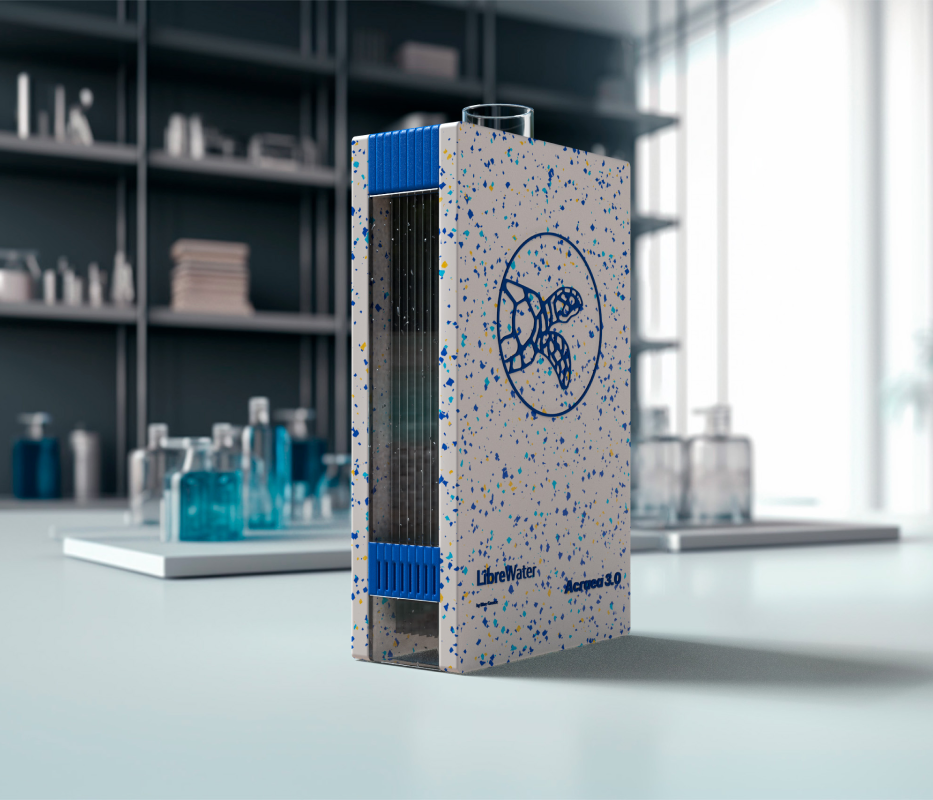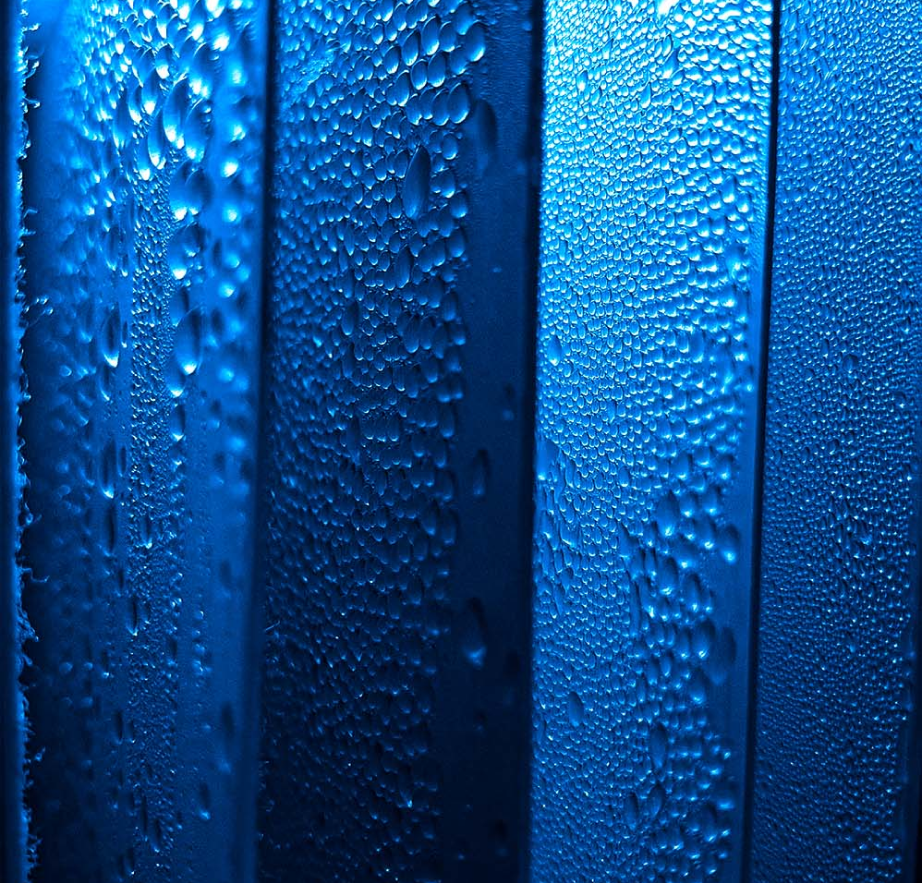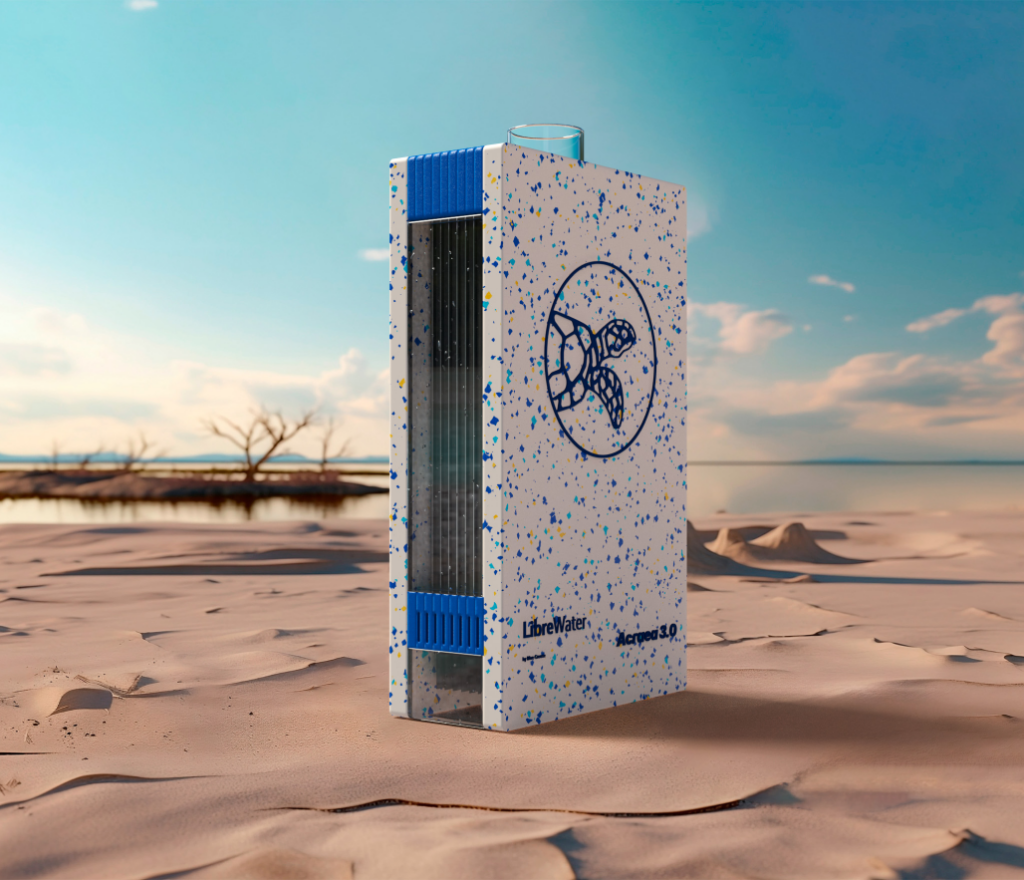Harnessing Open-Source Innovation to Tackle Global Water Stress


Climate change as a main source of water stress worldwide
As of 2022, some 2.2 billion people still lack access to safe drinking water, an issue that's becoming more serious as water stress caused by climate change continues to increase. Tackling water stress worldwide requires collaboration and innovation – whether in new approaches to existing technologies or completely novel solutions. What Design Can Do's Make it Circular Challenge winner LibreWater combines both approaches with its Open Source Hardware desalination device. The design will be shared free of charge for local production. Everybody is welcome to adapt, build, change, or sell it.
Chemical engineer Simon Meyer and mechanical engineer Spyros Nompilakis met in 2018 on a farm in Greece. And in 2021, they planted the seeds of LibreWater. "It started with finding a very old plastic bottle on a Greek beach and asking ourselves how we can avoid plastic waste and ensure clean water directly where one is," says Simon. Industrial designer Tom Dietel joined the duo in 2022. Tom had been looking for promising startups with holistic, open-source products on which he could write his master’s thesis.
The origins of Acraea, an open-source 'rain in a box' water purification device
LibreWater embarks on a fresh approach in the realm of creating drinking water. With the support of many other experts, scientists, makers and entrepreneurs, Meyer, Nompilakis, and Dietel – collaborating as a developer collective – created an open-source desalination prototype based on proven technology but adapted to open production methods, such as 3D printing and CNC milling.
LibreWater’s Acraea prototype works a little something like this: salt water – or any water that needs purification – enters the device and gets absorbed by a series of cloths adjacent to as many metal plates. The heat produced by an electric or solar energy source evaporates the dirty water into clean steam that condenses on the device’s metal plates. By using the principle of rain – evaporation and condensation – the device creates pure, drinkable water without needing a special filter. The heat from the condensation process is recovered and continues to the next metal plate, producing more clean water again and again with less energy.
Open sources solution to empower rural communities to take ownership of their drinking water supply
LibreWater’s award-winning Acraea prototype is, as the team calls it, ‘rain in a box’. It can empower rural communities to develop their clean drinking water supply and even monetise it for socially-minded startups.
Why rural communities? “Providing small-scale water solutions to rural areas is a big challenge for conventional business approaches. Many have tried and failed. So collaborating directly with people closer to an issue by employing free and open designs will help build appropriate solutions,” says Spyros, who is also experienced in patents thanks to his time at the European Patent Office. “Patents sometimes work and sometimes don’t. With open source, you can decide what you want to share,” he explains.
“We know something about design, but the users in rural communities know other things that we don’t know. We want people to adopt the device and take ownership of it, maybe even launch a social business that offers affordable access to water,” Simon adds as he recalls his stay in Namibia, where he had experienced the entrepreneurial drive of small business owners.

Design as the driving force behind a customisable clean water solution
"Design is the overall approach – how we do things in a complex world that needs systemic change. Right now, circular design is the best way to move the needle on an economy that produces a lot of waste. We want to go from user-centric to planet-centric design that expands a product's lifecycle and uses resources more efficiently," says Tom.
Regarding concrete design, the essential task for the LibreWater team is to ensure that the "solution-as-a-service" can be adapted to local conditions and the tools available in that area's makerspaces and fab labs. "We try to have people continually co-design the solution with us. They can take it further without needing us anymore," says Spyros.
To Simon's mind, the Acraea prototype's ideal maker and user is "a prosumer who needs clean water and goes out and co-creates the machine with us." And hopefully, this proactive approach can also result in local businesses running from hubs concentrated around maker spaces.
Creating a business model around open-source innovation
So if part of LibreWater’s mission is not to be needed any more, how will they make money? “Many investors are not willing to support us because they don’t get anything in return from open source, so we currently rely on foundation grants and awards from prize competitions,” Spyros explains. But their ambition is to demonstrate the added value of their open-source solution.
“We can introduce technologies and skills such as 3D printing to a broader audience. We don’t need to sell our solution, but rather everything around it,” says Tom.
The LibreWater’s team is optimistic about future financing. “With the rise of Open Source Software, people used to ask, ‘If the code is for free, how will you make money?’. Now, Open Source software is the backbone of our digital society. Open-source software and hardware can lead to revenue streams we cannot even begin to envision. We are in a pioneering phase,” adds Simon.

Meeting like-minded innovators in WDCD's Make it Circular Challenge
Becoming one of the 13 What Design Can Do's Make it Circular Challenge winners of 2023 was a significant step forward for LibreWater. In addition to the cash prize, they won a place in the social entrepreneurship development programme. "During the accelerator, we can learn about funding, business models, community involvement and many other topics that help us not repeat common mistakes. We can learn from experts who have been doing this for years," says Tom.
The team also benefited from the community bond created with their peers especially during the Amsterdam Bootcamp Week in June. "We loved meeting the other global winners. It's really cool to see lots of inspiring projects, especially on biomaterials such as bioplastics, which can help us grow our future impact," Tom adds.
And last but not least, the confirmation that accompanied the prize was a confidence boost: "650 applicants, and we are one of the 13 winners. This gave us a sense of encouragement and the idea that our solution was worthwhile pursuing. It helped bring the team on the same page and show us that what we are thinking makes sense to other people, too," he concludes.